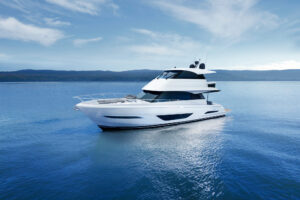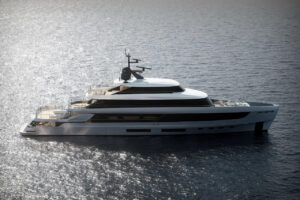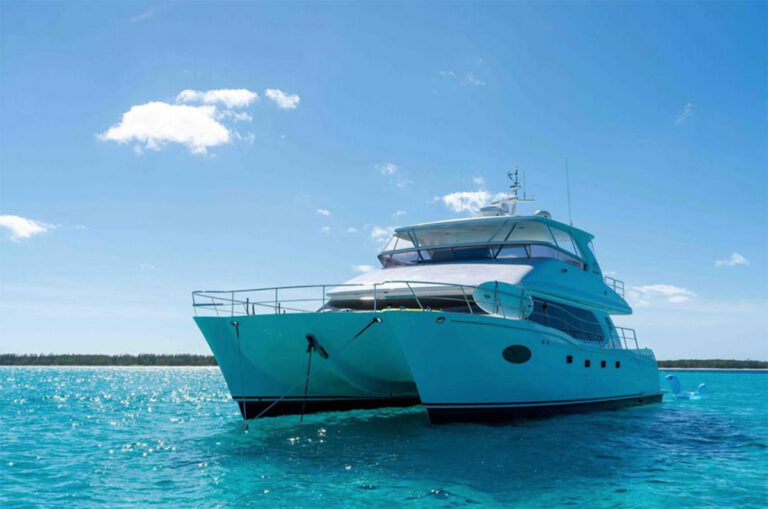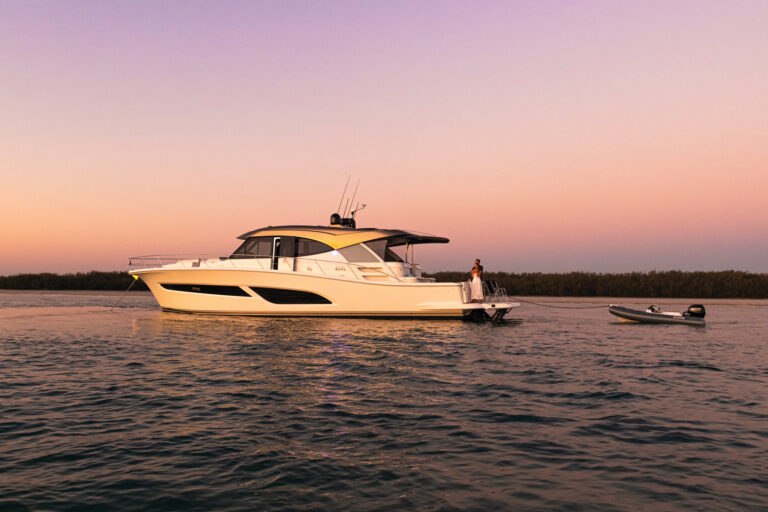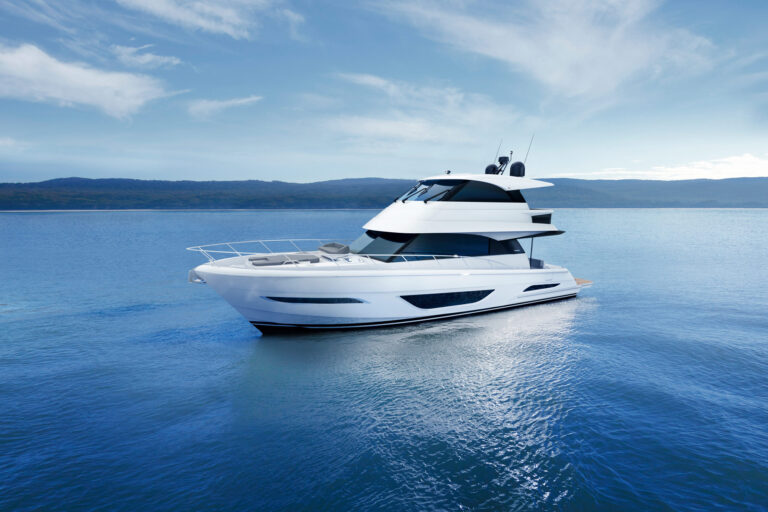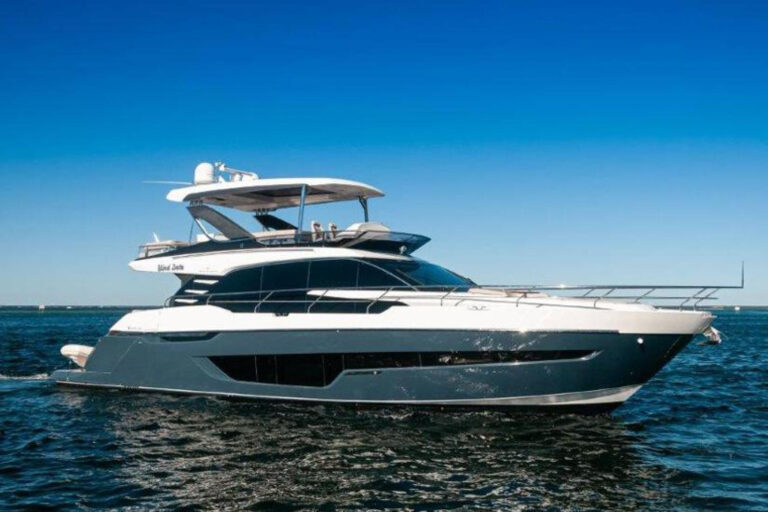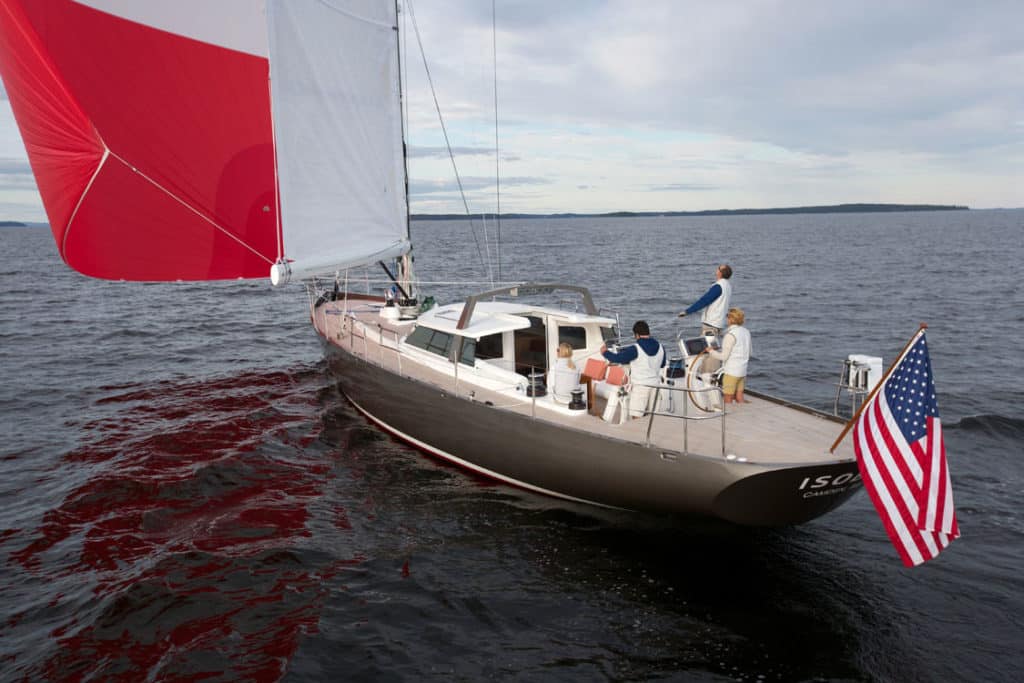
isobel_0917.jpg
The name Isabel means God’s promise. Isobel is the Scottish variant and also the name of a 75-foot sloop designed by Stephens Waring Yacht Design and cold-molded by the skillful craftsmen at Brooklin Boat Yard. I don’t know if she’s God’s promise, but she’s a fast and captivating yacht.
I sailed aboard Isobel_ on the first day of racing at the Penobscot Bay Rendezvous in August 2011. Our crew gathered at Wayfarer Marine, across the harbor from the Camden Yacht Club, in Camden, Maine. _Isobel rested undisturbed, starboard side-to beneath the shadow of the clubhouse. In the morning light, her silvery paint shone like a brazen hussy’s sparkling eye shadow. Bearing a certain resemblance to the Bristol Channel pilot cutters of the 19th century, her defiant plumb stem and elegant counter stern vied for attention while the admiring public wondered if they should love Isobel or fear her. Had I been sailing aboard another boat in her class, I’d have suffered equal doses of those emotions.
Although the Penobscot Bay Rendezvous (PBR) is more party than serious competition, Richard Schotte, the owner of Isobel, left no doubt that he wanted to win. So did designers Bob Stephens and Paul Waring, both of whom complained about the yacht’s rating. She had to give away a basket-load of minutes to the next-highest-rated boat — likely too many to recoup. Fog and very light air delayed the start, and the race committee sent us chasing patches of breeze all over the bay. Slippery Isobel, though, didn’t mind the weak wind — she was able to sail very near true wind speed while other boats drifted, sails rattling.
We raced well. Schotte drove, Stephens called tactics and trimmed the gennaker, Waring seemed to be everywhere at once and trimmed the main, and I shared trimming responsibilities on the jib with two other members of the crew. Although we were first over the line, we left a few of our handicap minutes in the basket. The J 124 War Bride won on corrected time. Prior to the PBR, though, Isobel had won the Eggemoggin Reach Regatta, Spirit of Tradition Class B, on corrected time. What’s remarkable is that, in spite of her prowess on the racecourse, she is more cruising yacht than race boat — a compromise that satisfies Schotte’s love of racing and his wife’s preference for cruising. My brief time aboard led me to believe that neither partner had to relinquish much.
Isobel races with a crew of eight, but Stephens Waring designed her for easy short-handed sailing in cruising mode. To that end, the design team gave her a simple fractional rig. Three sets of spreaders, raked at 27 degrees, keep the mast in column and preclude the need for running backstays in average sailing conditions, though runners support the mast when the yacht reaches or sails deep angles off the wind under the asymmetrical spinnaker. The flattop mainsail has full-length battens, and it sheets to an electric winch atop a pedestal on the centerline just forward of the twin steering wheels, within easy reach of the helmsman. Lazy jacks mind the sail as it descends to the wide boom.
“One of the unexpected benefits of the square-top main,” Stephens said, “is that its leech is so vertical you don’t have to move much when pulling it aft to flake it — pretty much just stand on the saloon roof and flake it. It’s an easy step up over the windshield, and then the boom’s at waist height.”
The Harken switch-track system aboard Isobel automatically guides the batten cars onto two tracks during the final few feet of the descent, reducing the stack height by half. A flattop mainsail with a traditional headboard adds to the labor of furling the sail. The crew normally disconnects the headboard from the carriage and removes the “gaff” batten, which lets the head of the sail fold into the stack. Doyle Sailmakers’ patented Anomaly system lets the flattop main drop away from the headboard when the halyard goes slack. Hoisting the sail automatically pulls the headboard onto the carriage, and a toggle locks it into place. Under way, the mainsail twists off at the top to spill gusts. In theory, this should allow the yacht to carry the full main for a longer period of time in gusty winds. We didn’t experience anything remotely similar to gusty, so I can’t confirm the claim.
Electric primary winches reside just abaft the cockpit benches, the manual secondaries closer to the wheels. If the helmsman were on watch alone and steering with the autopilot set to follow a compass course, she could easily step forward to ease or trim the headsail and main to compensate for shifting wind direction. “The secondaries are essentially utility winches,” Stephens said. Chores delegated to these manual winches: run second sheets for the headsails, move the lead outboard for power reaching, and tension the running backstays.
The jib sheets to a car on an adjustable track atop the outboard edge of the trunk cabin, port and starboard. This location permits a very narrow sheeting angle (8 degrees) and high sailing angles to windward. “Under the huge square-top mainsail and blade jib only, we quickly reached wind speed,” Stephens said about his early sea trials, “settling in at a steady 9-plus knots in 11 knots of true at an apparent wind angle of about 26 degrees.” From the recessed tracks, the sheets run aft via conduits to the primary winches.
Aboard a yacht of Isobel’s length, hydraulic sail-handling gear has become very popular, but Stephens Waring and Schotte took a different tack. “We designed the sailing systems specifically to avoid the issues that come with large, complex hydraulic systems: excess weight, loss of power when running multiple functions simultaneously and, most important, complexity and maintenance headaches,” Stephens explained. All of the heavy loads — the winches, furler and windlass — use electrical power. The individual electric motors are heavy, but the design team realized a net reduction in weight over a fully hydraulic system. A low-volume hydraulic system powers the vang, Cunningham, outhaul and tilting footrests at the helm.
“When multiple functions are called for, like rounding the windward mark and furling the jib while setting the kite and trimming the main,” Stephens said, “instead of a hydraulic pack bogging down and slowing the rotation of each winch, Isobel’s burly lithium batteries pump plenty of juice to each electric motor.” When something goes wrong, the crew doesn’t have to dig into a complex logic board to find the fault, because each motor’s wiring is independent and easy to troubleshoot.
Isobel‘s light, accurate and quick steering and her immediate response to the wheel captivated me. She felt much smaller than her nearly 69 feet of length on deck, because she’s light and relatively narrow. This responsiveness comes from the rocker in her shallow underbody, and the efficient rudder. Nicely distributed volume below the datum waterline and fair sections let her slip through the water, leaving very little evidence of her passage. This lovely bottom defies the rules for displacement hulls: She’ll easily exceed her theoretical hull speed of 10.13 knots in relatively calm seas and a fresh breeze.
Keeping focused on her primary mission of cruising, the design team divided the cockpit into the business end, aft, and the pleasure end, forward of the primary winches. Benches and a drop-leaf table let guests mingle, have snacks, sip drinks, remain clear of the working crew and still be in on the action — vicariously. The coachroof extends aft, port and starboard, to shelter the benches over the forward third of their length. I banged my head twice on that structure as I exited the companionway, but a taller person likely won’t suffer the same fate, because the extensions will be at eye level.
Yachts express themselves in much the same way humans do — via the shapes, colors, actions and moods that comprise one’s character. Isobel’s simple exterior appearance suggests an honest and straightforward approach to sailing fast without taxing her crew. Her interior, on the other hand, is pure soul. Done by Martha Coolidge Design in collaboration with the owners, the arrangement flows uninterrupted from companionway to forepeak. Natural light from the deckhouse windows and an array of four hatches arranged in the shape of a cross abaft the mast set the bird’s-eye maple joinery aglow. The white tongue-in-groove overhead further brightens the interior. Coolidge used backsplashes behind the stove and sink made of small, square stainless-steel tiles. The sink is huge — large enough for washing pots and pans without bathing the sole in soapy water.
Isobel may seem small for her length, but that’s a big part of her appeal. Her thoughtfully and artfully designed interior made me want to move aboard. Had she been beamier and more spacious she’d have given up a lot of her soul. Easy to sail, full of aesthetic character, cozy and welcoming below — where’s the compromise?
Brooklin Boat Yard, 207-359-2236; brooklinboatyard.com; Stephens Waring Yacht Design, 207-338-6636; stephenswaring.com; Martha Coolidge Design, 207-266-3286; marthacoolidgedesign.com



